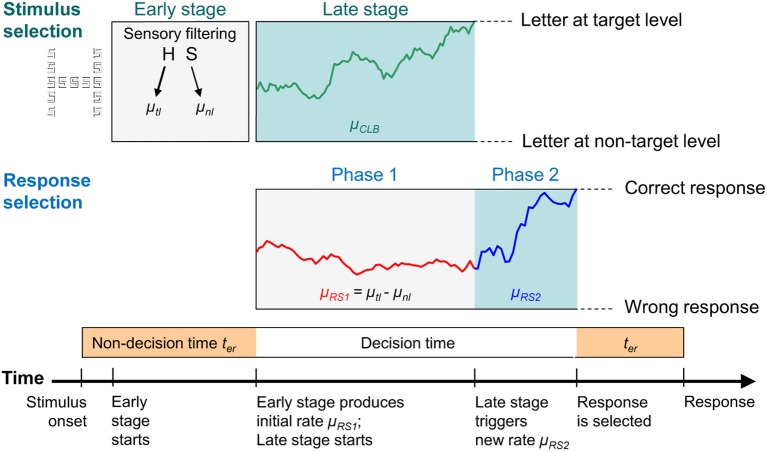Figure 5.
A graphical illustration of the dual-stage two-phase (DSTP) model. An early stage of stimulus selection (i.e., sensory filtering/weighting) provides component rates according to the information at the target level (μtl) and at the non-target level (μnl), which sum up to the drift rate μRS1 for Phase 1 of response selection. Because the stimulus is incongruent in this example, μnl is negative. In parallel with response selection in Phase 1, a late stimulus selection process (CLB) runs with rate μCLB until it reaches one of the two boundaries. Here, the upper boundary was hit, which leads to the binding of the target letter to the target level. After binding, response selection enters Phase 2, which is characterized by a new (higher) drift rate μRS2. The decision is completed as soon as the response selection process hits one of the two response boundaries reflecting the choice alternatives. The duration for the non-decisional processes (sensory filtering, motor execution, etc.) is captured by the parameter ter.

